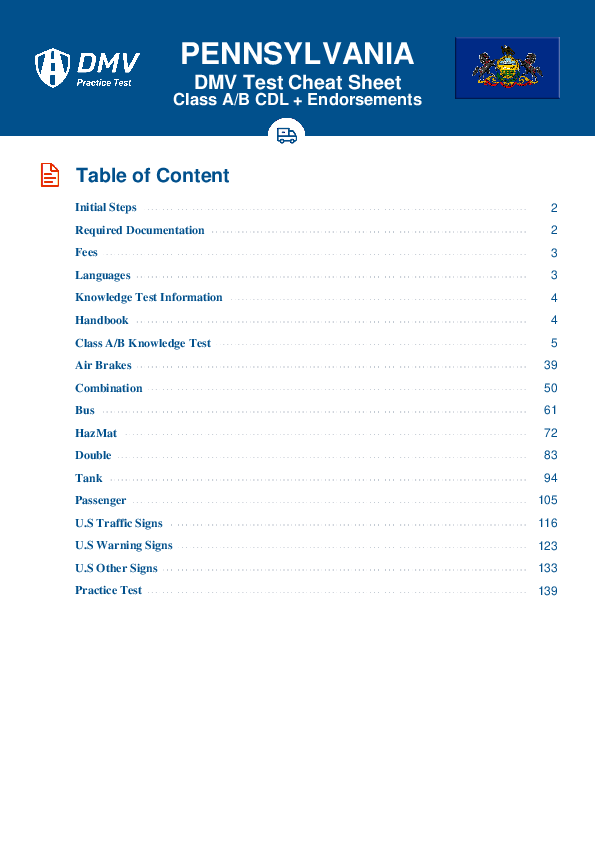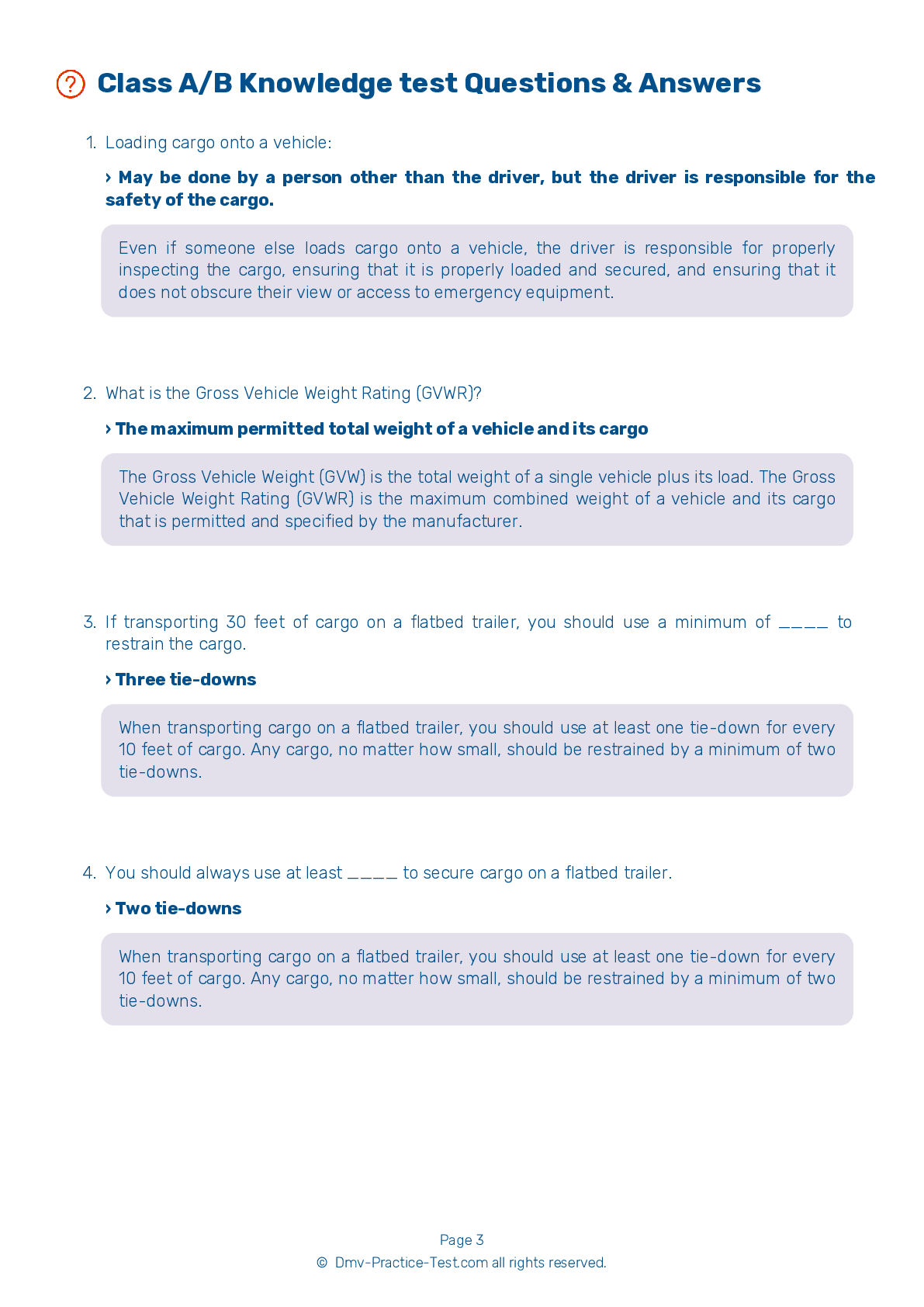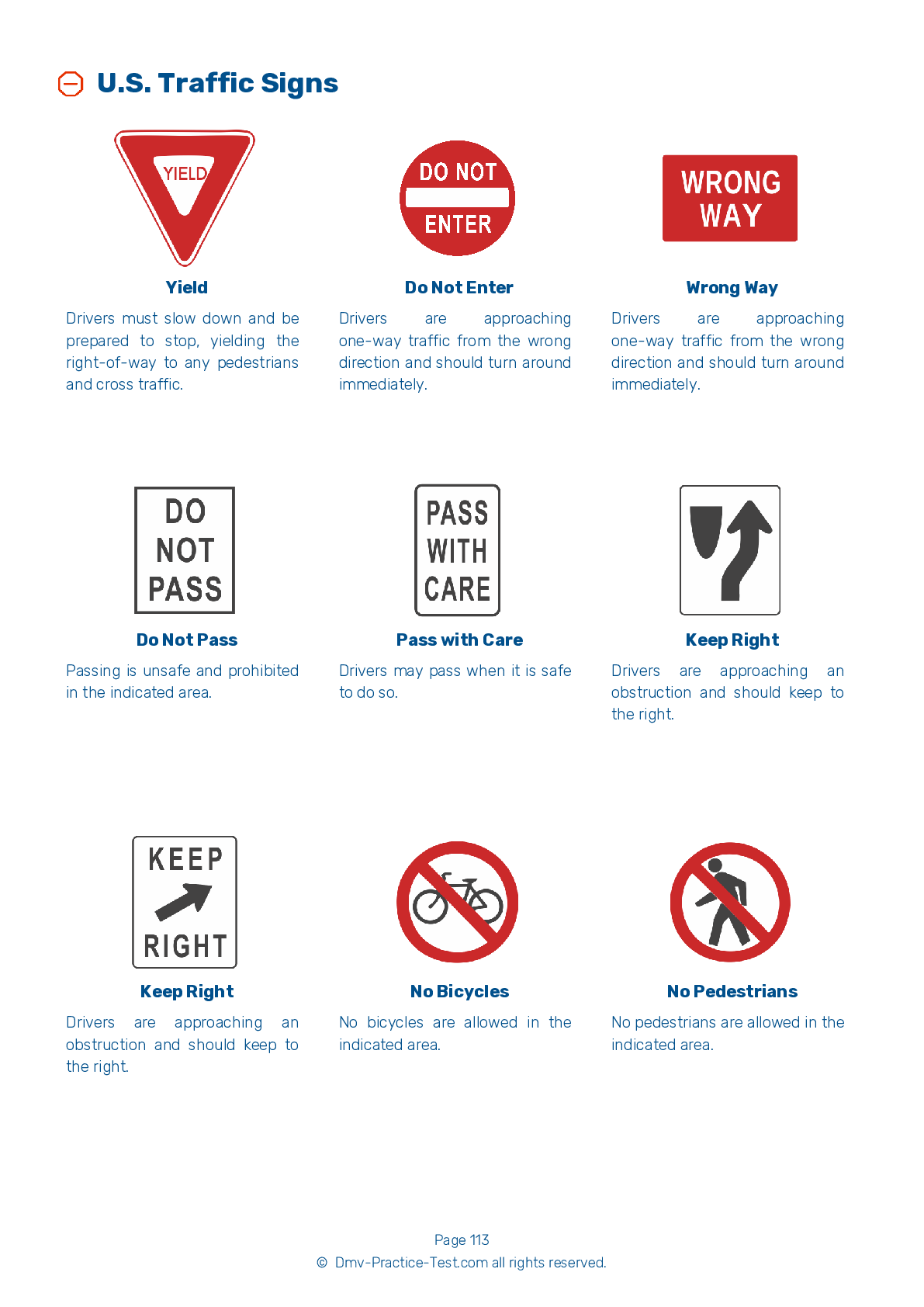Air Brakes #2
Air Brakes Endorsement Test | Pennsylvania 2025 #2 Page 3 of 4
Train for FREE online with our Pennsylvania CDL air brake test. The official exam test consists of several obligatory parts, with all of them checking your knowledge of different blocks of road rules. If you need to obtain a PA Class A/Class B driver license in 2025, practice as much as possible. Free sample tests published on our website will help you check and improve your knowledge and boost your grades. Please bear in mind that the requirements for CDL may vary from state to state.
25
20
20
13 . To stop in a vehicle that uses air brakes, the driver should:
Pull the brake pedal up.
To make a normal stop in a vehicle with air brakes, push the brake pedal down. The harder the pedal is pressed, the more air pressure is released.
14 . Where is the safety relief valve usually located?
On the dashboard
An air brake system's safety relief valve is located in the tank that is first to receive air from the compressor.
15 . Vehicles with dual air brake systems:
Do not need time to build air pressure before a trip.
Before driving a vehicle with a dual air brake system, you must allow the air compressor time to build up at least 100 psi of air pressure in both the primary and secondary systems.
16 . When the brake pedal is pushed down, air brakes work:
Only if it is warm outside.
Because air takes time to flow through the air lines to the brakes, air brakes cannot begin working instantly. There is often a brake lag of at least one-half of a second between the moment the brake pedal is pressed and the moment the brakes begin to work.
17 . If the air pressure warning light comes on, you should:
Safely exit the roadway and stop.
If the air pressure warning light or buzzer comes on while you are driving, you should immediately stop and safely park the vehicle. This warning signal indicates that there is a problem in the air brake system that needs to be fixed.
18 . What can happen if the air pressure gets too low in an air brake system?
The brakes will be very sensitive.
Pressing and releasing the brake pedal unnecessarily can let air out faster than the compressor can replace it, reducing the available air pressure. If the air pressure in an air brake system gets too low, the brakes will no longer work.
2025 Pennsylvania | Frequently Asked Questions
To get a CDL Hazmat endorsement in Pennsylvania, first obtain a Commercial Driver's License (CDL). Then, pass the Hazardous Materials Endorsement Knowledge Test. After passing, you'll need to undergo a federal TSA background check. Once cleared, take your test results and TSA clearance to PennDOT to have the Hazmat endorsement added to your CDL.
To obtain a CDL Hazmat license, you must first have a Commercial Driver's License (CDL). You must also be at least 21 years old, be a U.S. citizen or have legal status, and be able to read and speak English. Additionally, you'll need to pass a Hazardous Materials Endorsement Knowledge Test and a TSA background check.
When applying for a CDL Hazmat endorsement, you'll need your current Commercial Driver's License (CDL), proof of U.S. citizenship or legal status (like a passport or birth certificate), and a completed Hazardous Materials Endorsement application. You'll also need to provide your TSA background check results once they're available.
Yes, there is a dedicated written test for the CDL Hazmat endorsement. The Hazardous Materials Endorsement Knowledge Test covers information related to transporting hazardous materials safely. This includes understanding hazard classifications, placarding rules, loading and unloading procedures, and emergency response procedures. It's important to study thoroughly to pass this test.
The written test for the CDL Hazmat endorsement covers a variety of topics related to hazardous materials. These include identifying different types of hazardous materials, understanding shipping papers and placards, knowing how to safely load and unload hazardous materials, understanding the rules for transporting hazardous materials, and knowing what to do in case of an emergency situation.
Yes, there are additional charges associated with obtaining a CDL Hazmat endorsement. You'll need to pay for the TSA background check, which costs around $86.50. Additionally, the Pennsylvania Department of Transportation charges a fee for adding the Hazmat endorsement to your CDL, which is typically $5.00. However, these fees can vary and may change over time.
Yes, obtaining a CDL Hazmat endorsement in Pennsylvania requires a background check. The Transportation Security Administration (TSA) conducts this check to ensure you're not a security risk. This process includes fingerprinting and checking criminal, immigration, and mental health records. Only after passing this check can you receive your Hazmat endorsement.
Yes, specialized training is required for the CDL Hazmat endorsement. Applicants must pass a written test covering topics such as loading and unloading hazardous materials, bulk tank loading, and driver responsibilities. After passing the test, they are granted the Hazmat endorsement on their CDL. It's important to study the Pennsylvania CDL manual's hazardous materials section to prepare.
No, you cannot legally transport hazardous materials without a valid CDL Hazmat endorsement in Pennsylvania. This endorsement ensures that drivers have the necessary knowledge and skills to safely handle and transport hazardous materials. Violating this regulation can result in hefty fines, license suspension, or even imprisonment.
Yes, you can add the CDL Hazmat endorsement to your current CDL license in Pennsylvania. You don't need to apply for a new license. However, you must pass the Hazmat knowledge test and undergo a TSA background check. Once these are successfully completed, the Hazmat endorsement will be added to your existing CDL.



